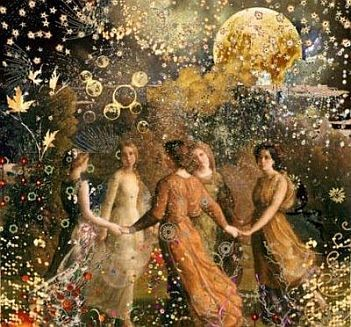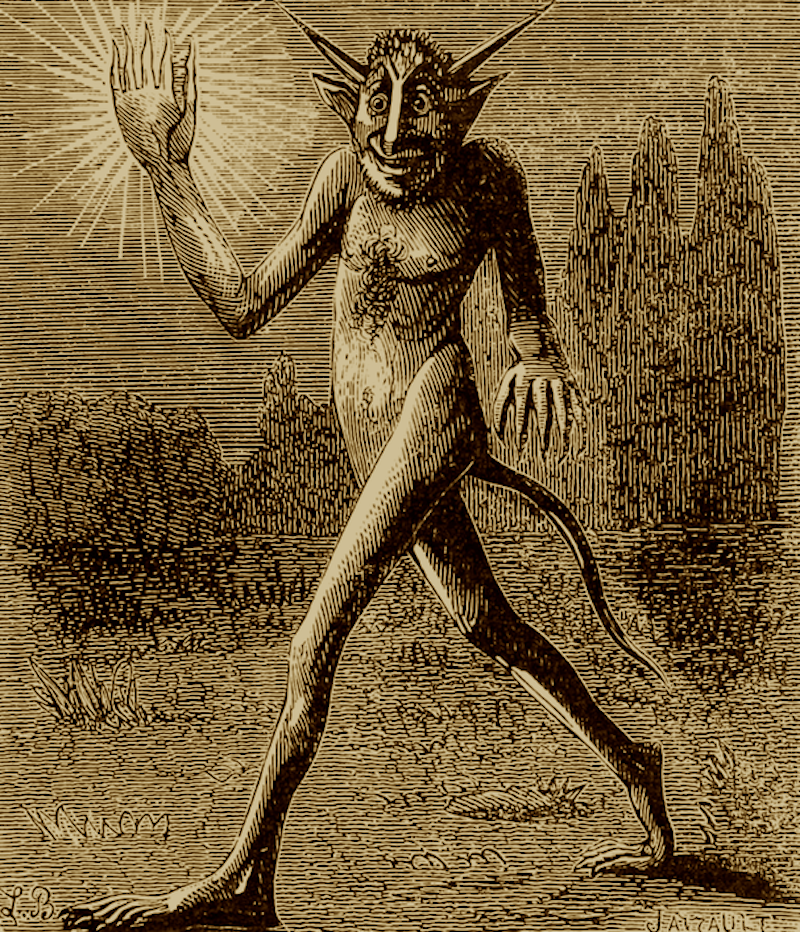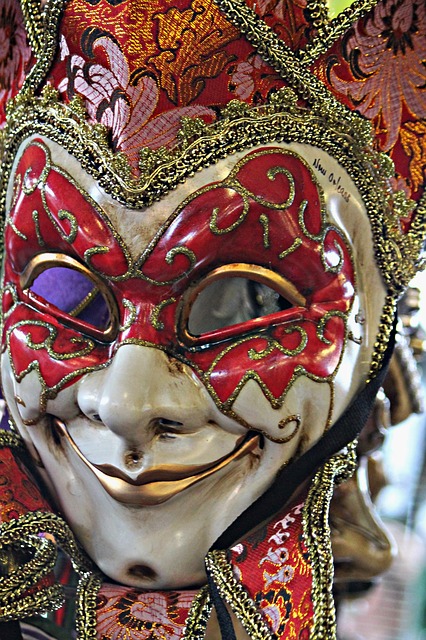
She appeared as a mystical queen, dressed in white and blue, to the teenager Bernadette Soubirous in the year 1858, at a grotto near Lourdes France. The grotto became the site of a freshwater spring which has miraculous healing powers. Her Feast Day is celebrated on February 11, the same day she made her first appearance to Bernadette. She identified herself as “The Immaculate Conception”, thus revealing herself as the Virgin Mary, the mother of Jesus. She appeared to Bernadette a total of eighteen times that year.
Was the Lady of Lourdes real, or a mere figment of the overactive imagination of a dreamy teenager? Read on to find out more about The Lady and the girl who witnessed her!
LIFE IN THE DUNGEON

Bernadette Soubirous was born on January 7, 1844. She was the daughter of François Soubirous (1807–1871), a miller, and Louise (née Casteròt; 1825–1866), a laundress. She was the eldest of nine children, although only three of them lived to adulthood. Bernadette was basically a peasant, and a nobody. She was poorly educated. She could barely read or write, and spoke only her native language of Occitan, which was spoken by the local population of the Pyrenees region where she lived. As a child she suffered with asthma that kept her out of school.
Bernadette’s family lived in abject poverty. France itself was suffering a financial depression also. By the time of the events at the grotto, the Soubirous family was so poor they lived in a one-room basement, formerly used as a jail, called le cachot, “the dungeon”. Here, they were housed for free by Louise’s cousin, André Sajoux.

In addition to their poverty, Bernadette’s parents also suffered from alcoholism. It was, by all appearances, a pretty bleak childhood.
Yet it is often the most lowly who are chosen to experience miracles…
A LADY IN WHITE

On February 11, 1858, when Bernadette was fourteen years old, she was out gathering firewood with her sister Tonette and a friend. The girls became separated when the sister and friend decided to wade through a stream as there was more wood on the other side. Tonette, knowing Bernadette’s asthma could be affected by the cold water, urged her to wait behind. While Bernadette was waiting, she noticed a sudden wind blowing through the bushes. She then looked up and saw “The Lady” standing in the grotto.
Of her experience, Bernadette said:
“I saw a lady dressed in white, wearing a white dress, a blue girdle and a yellow rose on each foot, the same color as the chain of her rosary; the beads of the rosary were white … From the niche, or rather the dark alcove behind it, came a dazzling light.”
When the other girls came back, they knew something was up with Bernadette. She looked weird, even illuminated. She took off her socks and waded through the cold stream that Tonette had warned her to stay out of. Even though it was cold February, Bernadette insisted the water felt warm, her whole body felt warm. Bernadette then told the other girls of The Lady she had seen. She asked them to tell no one, and they both promised to keep it a secret.
HOLY MARY OR DEVIL’S DAUGHTER?
Tonette, however, being a proper sibling, broke the promise and reported the incident to their mother. Bernadette’s mother ordered her to never return to the grotto, thinking that the apparition must be something evil. Bernadette, however, disobeyed her mother and returned to the grotto. But before she went, she made a visit to the local priest, explaining to him what she had seen. The priest probably did not believe her, but he gave her some holy water just in case.
Bernadette was to bring the holy water to the grotto and sprinkle it on The Lady. This was a test to make sure the Lady was, indeed, a holy thing, and not of the Devil. (Reportedly, the Devil cannot tolerate holy water and would have had an adverse reaction. Remember ‘The Exorcist’? When confronted with holy water, the Devil writhed in pain, shouting “It burns!” )

But The Lady took on the holy water just fine, therefore convincing Bernadette she was of good and of God.
The Lady made a total of eighteen appearances, ending on July 16th. For the first few times, The Lady said nothing, but on the third time she asked if Bernadette would come to visit her fifteen more times. Bernadette agreed. She also told Bernadette “I promise to make you happy, not in this world, but in the next.” The Lady, of course, spoke to Bernadette in the language of Occitan, not the more common language of French, thus proving that Bernadette had been somehow chosen for these messages.
TAKE ME TO THE RIVER…
The next time Bernadette went to the grotto, other people, curious to see the apparition, followed her. The Lady asked her to dig in the dirt. Bernadette did so. At first, she found nothing, but as she dug deeper, she hit water. The water was at first muddy, but soon emerged as a crystal clear spring!
There was a woman in the crowd who had followed Bernadette to the grotto. This woman had suffered an accident, and had paralyzed fingers. The woman came forth and put her fingers in the water. As soon as she did so, the paralysis was healed.

After that, crowds of people followed.
The freshwater spring eventually became the baths of Lourdes. When the word got out that the water was miraculously healing, pilgrims began to visit in droves. In 1883, the Catholic Church set up a special committee to investigate the healings. To date, more than 7,000 miraculous healings have been attributed to the water of Lourdes, but only 70 of them are officially recognized by the Catholic Church.
Not everyone believed Bernadette. The townspeople were divided. Some of them thought she was telling the truth, and faithfully followed her to the grotto. Others insisted the girl must be crazy and petitioned for her to be put in an asylum.
EAST OF EDEN
When Bernadette went to the grotto on March 25th, The Lady spoke again, stating “I am the Immaculate Conception.” Bernadette, however, with her meager education and her naiveite, had no idea what the word “conception” actually meant. She went to report this to her priest, and he was dumbfounded. The dogma of the Immaculate Conception had only recently been accepted by the Catholic Church.
The Immaculate Conception of Mary is a doctrine which states that Mary herself was conceived without Original Sin in her mother’s womb. Original Sin is the generational sin of Adam and Eve, which all humans are said to inherit. But seeing as how she was destined to be the mother of Jesus, Mary had to be absolutely pure. Thus Mary was created as a special being, “The Immaculate Conception”, free from sin since the time her mother’s egg met her father’s sperm.

Contrary to popular belief, Immaculate Conception does not refer to the virgin birth of Jesus. However, The Lady picked a unique date to reveal herself to Bernadette. March 25th is the Feast of the Annunciation, marking the very day the angel Gabriel appeared to Mary to inform her that she was a pregnant virgin!
During the rest of Bernadette’s visits to the grotto, The Lady asked her to tell people to pray and repent. She also asked that a church be built on the site of the grotto.

Was The Lady authentic? The Catholic Church thinks so. The church spent four years investigating the matter, and in 1862 confirmed the authenticity of the apparitions.
As for the miraculous spring water, the 70 cases that have been declared as authentic miracles underwent an investigation by the Lourdes Medical Bureau. The Bureau determined that these cases are indeed miracles, because after “extremely rigorous scientific and medical examinations” they failed to find any other explanation. These cases involved the crippled being able to walk, heart trouble and edema cured, paralysis cured, and the healing of many other sicknesses. The Lourdes Commission ran an intensive analysis on the water and found that, while it had a high mineral content, it contained nothing out of the ordinary that would account for the cures attributed to it. Bernadette said that it was faith and prayer that cured the sick: “One must have faith and pray; the water will have no virtue without faith.”
The chapel that The Lady requested was built on the grotto. To this day, as many as 6 million pilgrims visit each year.
SONG OF BERNADETTE

As for Bernadette, she disliked all the attention the spectacle had brought her. She left home to attend a school run by the Sisters of Charity in Nevers, France. There she finally learned to read and write. Bernadette became a nun at the Sisters of Charity. Her new name was Sister Marie Bernarde, and she had a special devotion to Saint Bernard. She spent long hours transcribing texts about him. She also became a skilled embroiderer, creating beautiful vestments.
Unfortunately, the healing waters of Lourdes did little for Bernadette’s sickly conditions. She continued to be plagued with asthma.
I know, I know! All you naysayers are now saying, “Hmmph! Some water. Couldn’t even heal Bernadette!”
But wait. Consider a more mystical, and bigger meaning. After all, The Lady herself had told Bernadette verbatim “I promise to make you happy, not in this world, but in the next.”
Bernadette died of tuberculosis at the tender age of thirty-five, on April 16, 1879. On her deathbed, she was still praying the rosary, and proclaimed, “all this is good for Heaven!”
DIGGING UP THE DEAD

Even after her death, Bernadette remained a woman of interest.
The church wanted to declare her a saint, but before this could officially happen, her body had to be exhumed. Here’s where it gets a bit vampiric…
The church exhumed Bernadette’s body on three separate occasions, in 1909, 1919, and finally in 1925.
Upon the first exhumation, a full thirty years after her death, according to official church accounts, the body was still young and intact.
Upon the second exhumation, in 1919, the attending doctor said: “The body is practically mummified, covered with patches of mildew and quite a notable layer of salts, which appear to be calcium salts… The skin has disappeared in some places, but it is still present on most parts of the body.”
Upon the third exhumation, in 1925, the body was still intact enough for the church to declare an official miracle. However, an imprint was made of her face (which had reportedly blackened, although the skin was still intact) and a wax mask was placed over it. The body was put in a crystal coffin.

Bernadette was canonized as a saint by Pope Pius XI on December 8, 1933. (December 8th is also the Feast of the Immaculate Conception!)
The body of Bernadette, it its crystal coffin, lies today in the main chapel of the Convent of St. Gildard in Nevers, France. A constant stream of pilgrims visits the saint’s resting place to seek her intercession.
What do you think of Bernadette and The Lady? Let me know in the comments!























































